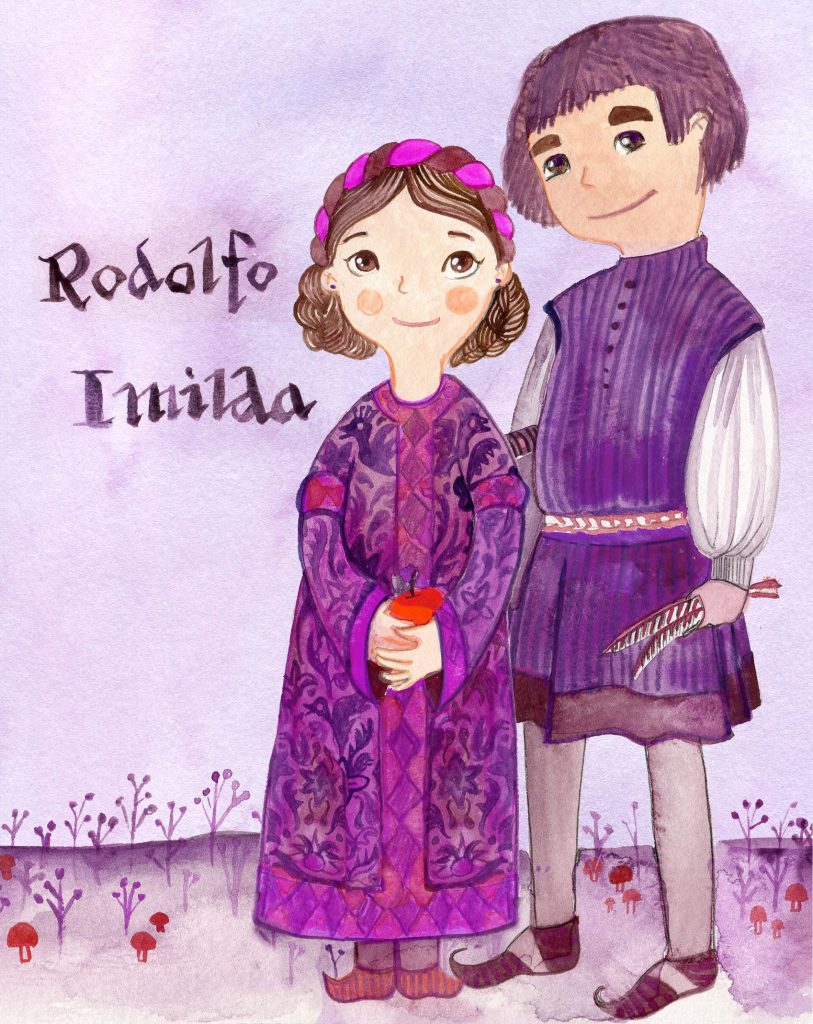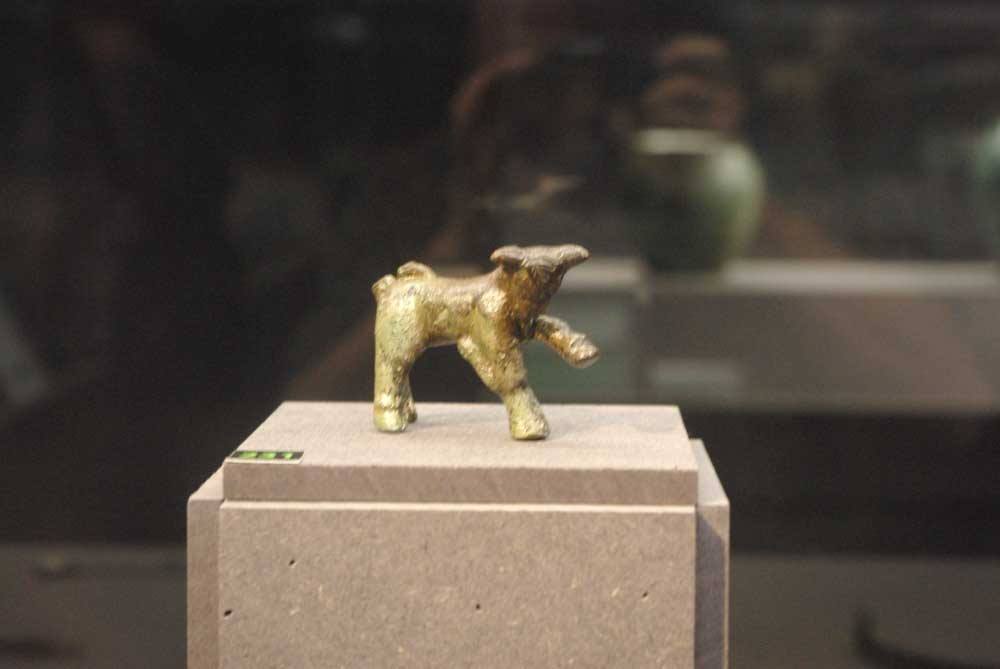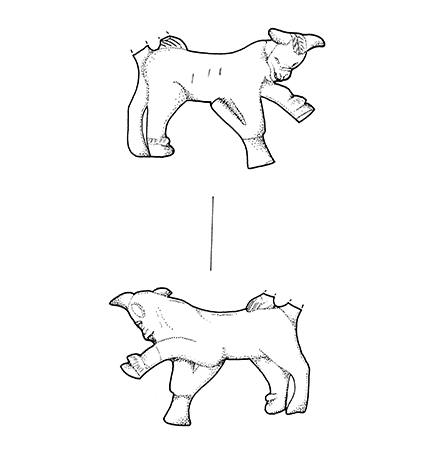
Roman Cetamura
Miniature Bull
Period | Roman |
Year | ca. 30 BCE – 37 CE |
Material | Bronze |
Location | Well #1 |
Cet. Inventory | Inv. C-13-385 |
A small bronze bullock from a Roman level of Well # 1 expresses in a poignant way some of the overarching appeal of the well deposits—the devotion to the gods, the choice selection of objects cast into the well, the overall high quality of the objects. The figure has minor damages (a broken tail ; corroded surfaces) but remains entrancing.
This small bronze figurine depicts what appears to be a bull, though one with rounded and immature features that together suggest either a very young bull or perhaps even a calf. The right front leg of the figurine is bent dramatically backwards while the left front leg is raised at a nearly 45-degree angle to the body. The position, along with the head which is angled down and twists slightly to the right, suggests the calf seems to either be in mid-leap or, possibly, in the process of kneeling. The craftsman of the figurine intended for the piece to be stable in this position and, thus, added an extra supporting post upon which the bent right knee rests. Though the supporting post resembles the actual legs of the animal, it is nearly double the size of the other legs at 1 cm. The three other legs all have slightly different measurements with the right rear leg nearly .6 cm, the left rear leg at 0.4 cm and the left front leg at 0.5 cm.
The piece is notable for the extraordinary detail on all parts of the animal and even some very small anatomical details are quite visible in this miniature piece. In the two rear legs, a vertical groove indicates the hoof area below the leg proper. Carved above the hoof and pastern area of each leg (though most visible on the left front leg) is a curved pattern of five tongue-like notches indicating the hair of the fetlock area. On the back of the left front leg and the right rear leg is a notch just above the hoof area that likely represents the animal’s dewclaw. A tail, now broken, originally curved from the rear of the animal, and rested on the back of the figurine.
The head of the animal also features a remarkable attention to small detail. Between the animal’s small horns and covering the upper area of the head is a forelock carved in relief with incised lines that together resemble a leaf pattern. The left eye socket is more visible than the right one which appears less distinct, possibly due to surface corrosion. Represented just above the figurine’s nostrils is a slightly raised area that seems to be a rope or some sort of bridle encircling this part of the face. That this feature may have been a restraint is possibly confirmed by an area on the back of the animal that appears to be incised banding encircling the sides of the animal. It is quite possible that this banding may be a dorsuale, a feature that would indicate this bull has sacrificial associations. The figurine was found in loci containing miniature vessels and polished pebbles. It was, thus, part of an artifact assemblage with strong votive associations indicating that the sacred character of the well continued into the Roman period.
The overall preservation of the figurine is excellent with only some minor surface corrosion.
Dating: Found in Well Group VI (ca. 30 BCE – 37 CE)
Bibl.: Cf. Turfa 2005, 186 (no. 184). De Grummond et al. 2015, 19, fig. 17. Lapatin 2015, 100; 241.
Etruscan activities for kids
Meet Lucius & Fulvia
Roman activities for kids

Meet Rodolfo & Imilda
Medieval activities for kids






